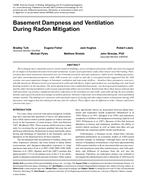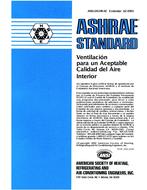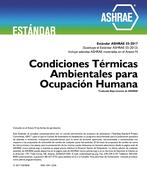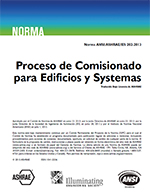Description
The technique most commonly used to control radon in buildings, active soil depressurization (ASD), has been investigated for its impact on basement moisture levels and ventilation. As part of an exploratory study, three houses near Harrisburg, Pennsylvania have been intensively monitored over an 18-month period for moisture indicators, radon levels, building operations, and other environmental parameters while ASD systems are cycled on and off. A conceptual model suggested that the ASD systems can cause important changes in basement ventilation and interzonal airflows – therefore these parameters were periodically measured. Moisture levels were measured in walls and slab floors, indoor and outdoor air, surrounding soil, and wood framing members in the basement. The participating houses have unfinished basements: one having poured foundation walls, and the others having foundation walls of open and partially-filled concrete block. Results from these three houses indicate that ASD operation can produce significant moisture reductions in the basement air and walls, especially during the non-summer months, and caused the predicted changes in airflow patterns. Moisture reductions were diminished during the warm and humid summer months. The findings are consistent with anecdotal reports of drying and odor improvement in basements during ASD operation, and suggest that microbial growth may also be reduced. These effects may be different in other climates and house construction types.
IAQ 2007 Conference held in Baltimore, Maryland, October 14-17, 2007
Units: Dual
Citation: IAQ Conference: IAQ 2007: Healthy and Sustainable Buildings
Product Details
- Published:
- 2008
- Number of Pages:
- 10
- File Size:
- 1 file , 420 KB
- Product Code(s):
- D-IAQ2007-31




